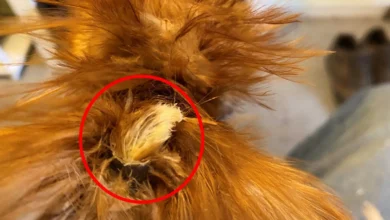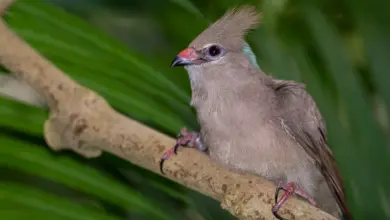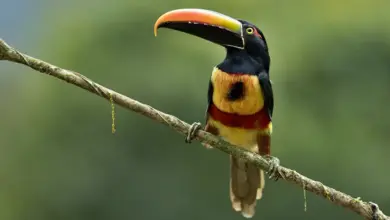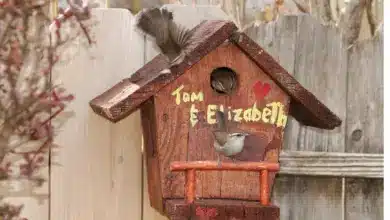Breeding Turacos
Keeping & Breeding Touracos / Turacos
Information and Photos by David Jones, UK Breeder and Turaco Expert – Website: http://www.turacos.co.uk
Setting up and Breeding Turacos:
The best turaco species to start with is the White-cheeked Turaco (leucotis). This species seems to be fairly hardy and less susceptible to disease. They are not aggressive to each other and breed readily.
The larger the aviary, the better, but 10ft long x 8ft wide x 8ft tall would be about the smallest I would suggest.
A narrower aviary can be used so long as they have sufficient extra distance to move from one end to the other.
Perches at either end, with a gap in between, will encourage the birds to fly.
Sexing your Turacos:
DNA sexing is recommended to ensure a true pair. Information on “do-it-yourself” sexing and disease testing ..
Can turacos be kept in a mixed collection?
I have kept turacos with finches, softbills (e.g. tanagers and common mynahs), waterfowl and pheasants. However you may find that the turacos tend to disturb other birds in the flight a little at dusk.
The turacos tend to keep on the move when others are trying to go to roost. I found this particularly with peacock pheasants as they went up to roost the turacos kept jumping around and over them, so the pheasants took some time to settle.
What kind of nest is recommened?
Turacos are not fussy about where they nest. They will happily deposit an egg in anything remotely nest-like. I have used old desk drawers, fruit crates, bicycle baskets and have even picked eggs off the feeding tray! I saw a White-cheeked sitting in a cardboard box at a friend’s collection recently.
It is sensible to position nests high in the aviary under cover, so that they stay dry.
I like wicker baskets such as the ones shown in the pictures below, which I purchased from Osmond Hartley at the Wholesale Fruit Market in Bristol. I am sure that baskets of this sort can be purchased all over the place.
Dry thin twigs and clean straw can be provided as nest material. Give them plenty because if chicks hatch in a nest with a smooth internal base and no nest material available then the chicks may become splay-legged.
Incubating Eggs:
- The incubation settings for White-cheeked Turacos and all the other similar species of turaco should be a temperature of 37c to 37.25c with a wet bulb reading of 29c to 29.25c which = 55% relative humidity.
- The best way of knowing if the humidity is correct for each individual egg is to weigh the egg on the day of laying and it should lose 16% up to the 19th day. Often if the female has laid 2 or more clutches the eggshells are thinner and the eggs will require a higher humidity. The parents instinctively regulate this.
- Turning is critical and the incubator should be set to turn the eggs automatically at least once an hour until each egg has reached 16 days of incubation. I understand that Grumbach incubators are very good forced air incubators which are expensive, with digital temperature and humidity display and electronic humidity control.
- More information on egg incubation.
- Egg incubation helpline: Nick Manning Tel: (UK) 07979305441
Dealing with Mate Aggression:
Typically hens are attacked by the male when the male is ready to breed and the female isn’t. Even pairs that have been together for many years and bred without a problem, can turn nasty to each other.
There are a few things you can try to get them back together:
- Remove the aggressive bird and let the attacked bird recover its confidence for a few weeks before putting the attacker back.
- Add hiding places within the aviary with food and water in some of them (where the attacked bird chooses to hide most). For example inside, cardboard boxes can be placed upside down on the floor of the shelter with a couple of pop holes at ground level to let the turaco in and out. Drain pipes can be left on the ground outside for a bird to hide in. A couple of feeding stations behind boards high up can give a chased bird somewhere to rest and feed. Usually, when out of sight, turacos are left alone.
- Trim the flight feathers on one wing of the aggressive bird to slow it down a little (but not in cold weather).
Hand-rearing Turacos:
Please refer to this website for a recommended handfeeding formula. Make sure that the chick doesn’t get overweight. A sign of an overweight chick may be the loss of the use of its legs.
If it appears otherwise healthy, the chick’s weight should be looked at. If the chick is overweight, watering the food down considerably for a while would help resolve this problem.
Ringing Turacos:
David Jones rings his turacos at about 3 weeks old as they are leaving the nest with aluminum closed rings, individually numbered and with my initials added, size ‘S’ for White-cheeked, Hartlaub’s, Black-billed, Fischer’s, Schalow’s, Red-crested, Purple-crested and Green-crested Turacos; size ‘T’ for Violaceous and Lady Ross.
He uses split plastic colored rings to mark adult birds, size 2FB, so that I can identify individuals from a distance. He purchases his rings from A.C. Hughes Ltd., 1 High Street, Hampton Hill, Middlesex, TW12 1NA:
- Tel: 0208 979 1366 / Fax: 0208 979 5872 / Website: http://www.ringco.co.uk (Order form and prices)
Diet / Food:
The following diet is recommended by David Jones – Website: https://www.turacos.co.uk:
To feed about 80 adult turacos, I mix together:
- 1200 grams (total) dry mix, in equal parts, of Orlux low-iron softbill diet (from Double Dutch 01970 832797), Haiths Prosecto (Freephone: 0800 298 7054 – UK only, International: (+)44 (0)1472 357515), poultry chick crumb, poultry layers pellets, Nutribird T16 (from Double Dutch 01970 832797), mixed dried fruit
- 100 grams of sweet corn (frozen)
- 4 large carrots, 100 grams mild cheese (grated)
- 5 hard boiled bantam eggs, 2 large iceburg lettuce (finely chopped)
- 40 apples, 10 pears, 50 grapes, 40 bananas, 10 tomatoes, 3 oranges (diced into 0.75 cm cubes)
Please refer to this website for softbill diets.
Memberships / Organizations:
The International Turaco Society is dedicated to the keeping and breeding of Turacos in aviculture and the collection and dissemination of information on the wild Turaco family in Africa.



